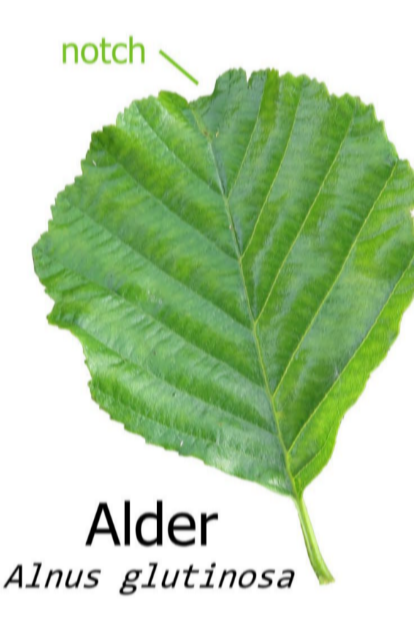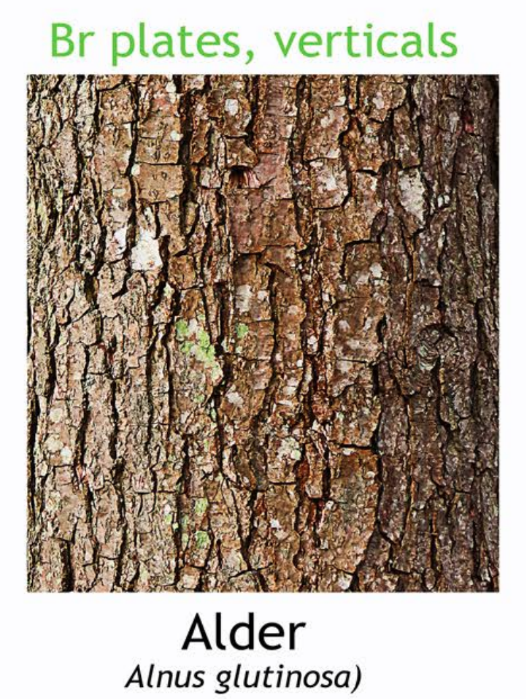A deciduous tree native to Ireland and much of Europe.
Recognising the Alder Tree:
- Leaves: The leaves of the Alder tree are dark green and serrated, with a rounded base and a pointed tip. They are arranged alternately on the branches.
- Bark: The bark of mature Alder trees is dark grey to blackish and becomes deeply fissured with age.
- Catkins: Alder trees produce long, cylindrical catkins. Male catkins are yellow and hang in clusters, while female catkins are smaller and green.
- Habitat: Alder trees are often found near water bodies such as rivers, streams, and wetlands. They have a high tolerance for waterlogged soils.
- Size: Alder trees can grow up to 25-30 meters in height and have a relatively narrow, conical crown.



5 Interesting Facts about the Alder Tree:
-
Nitrogen Fixation: Alder trees have a unique ability to fix nitrogen in the soil through a symbiotic relationship with nitrogen-fixing bacteria in their root nodules. This enriches the soil and benefits neighbouring plants.
-
Water Purification: Due to their preference for waterlogged soils, Alder trees are often planted in wetland restoration projects. They help to stabilize soil, reduce erosion, and filter pollutants from water, thus improving water quality.
-
Traditional Uses: Alder wood is relatively soft and durable, making it useful for various purposes. Historically, it has been used for making clogs, charcoal, and even for smoking fish.
-
Wildlife Habitat: Alder trees provide valuable habitat and food sources for various wildlife species. Birds such as siskins, redpolls, and goldfinches feed on their seeds, while insects and other invertebrates inhabit the tree's bark and foliage.
-
Cultural Significance: In Celtic mythology, Alder trees were associated with protection and healing. They were often planted near homes for their purported spiritual and medicinal properties.
Uses of the Alder Tree:
-
Timber: Alder wood is used in woodworking for making furniture, cabinets, and veneers. Its light colour and fine grain make it particularly suitable for staining and finishing.
-
Ecological Restoration: Alder trees are commonly planted in reforestation and wetland restoration projects due to their ability to thrive in waterlogged soils and their contribution to soil enrichment.
-
Landscaping: Alder trees are also cultivated as ornamental trees in gardens and parks for their attractive foliage, winter interest, and ability to attract wildlife.
Contribution to Biodiversity:
-
Habitat Provider: Alder trees support a diverse range of plant and animal species. Their presence in riparian zones and wetland areas creates habitats for aquatic organisms, birds, insects, and mammals.
-
Soil Enrichment: Through nitrogen fixation, Alder trees improve soil fertility, which in turn supports the growth of a variety of plant species. This enhances the overall biodiversity of ecosystems where Alders are present.
-
Erosion Control: By stabilising soil and reducing erosion, Alder trees help maintain the integrity of riparian habitats, preventing sedimentation in water bodies and preserving aquatic biodiversity.
In summary, the Alder tree is not only recognisable by its distinct features but also stands out for its ecological significance, cultural history, and practical uses in various industries. Its presence contributes significantly to biodiversity and ecosystem health, particularly in wetland and riparian environments.
